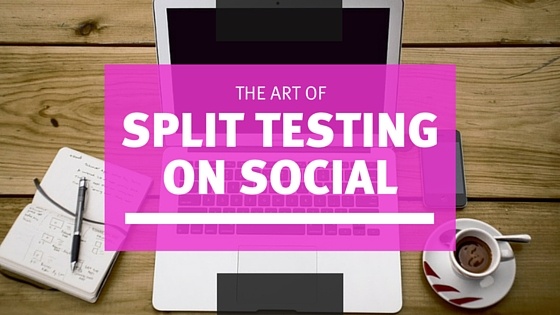If there is one thing digital allows us marketers to do, it’s test, compare and adapt very quickly. Split, or A/B testing, is one way to do that, and it can be applied to social media content.
Here are four things you can split test easily that can help you improve the reach and engagement on your social media channels.

1. Find the right timing.
This one is quite easy but can make a world of difference. Forget about the so-called studies that tell you what the best time is to post on social media, because there is no "one size fits all" here. Every community has its own way of using social media and may be more receptive on particular days and at particular times than others. Try different days, different hours, and see what results you get.
With Facebook, have a look at your page insights. It will indicate when your fans are most present online. I often notice that Saturday night is a good time, for example, but this might be different for your community.
Also, the time will vary from channel to channel, because people consume every social network differently. For example, they will go on Facebook several times a day, but less than 20% of people log into LinkedIn daily.
2. Play with the images.
The brain processes images much faster than text, which is why we generally are more attracted to posts that have an image (or a video) in them. But here too, there are variables you can work on:
- People versus objects: sharing a picture of an object or a picture of a person can make a lot of difference, so it’s definitely worth testing
- Color: see how it compares to black & white or to a mix of both
- Typography: fonts also impact the likability of a publication
3. Work on copy and tone
There are a lot of possible variations here, but usually you will need to stay compliant with the branding guidelines. It doesn’t mean that you can’t create variations, though, for example :
- Try asking questions versus making affirmations: this may result in more engagement
- Try exclamation marks, but don’t overdo them!!!
- Try giving calls to action in an imperative (command) form: "Read this article now" and see if that improves CTR
- Try switching between 1st and 3rd person as in: "I would try this app now if I were you" versus "Here is an app you want to try a.s.a.p."
4. Targeting can be a factor, too
Who said your whole audience needs to see all of your messages? You probably work with personas and need to address several different profiles. Creating targeting options so that you reach primarily the persona the message is intended for, could greatly improve conversions. And within each segment, you can play around with the targeting options as well, until you find the best combination.
How to do split testing properly?
First of all, make sure you always test ONE criteria at a time, otherwise you will not know what exactly impacted your results. Also make sure you are not performing tests during special times of the year, like holidays for example - as people are likely to have a different social media consumption then.
The second rule is of course that you will need to document everything. Create a simple spreadsheet in which you will write down what variation you created between two posts (get a screenshot and add it there if needed), then add your KPI’s such as views, likes, engagement, CTR, conversions.
Split testing is a long-term process but it is a powerful one, and it cannot be missed. Are there other things you successfully split test in your social strategy? We would love to hear it in the comments.
